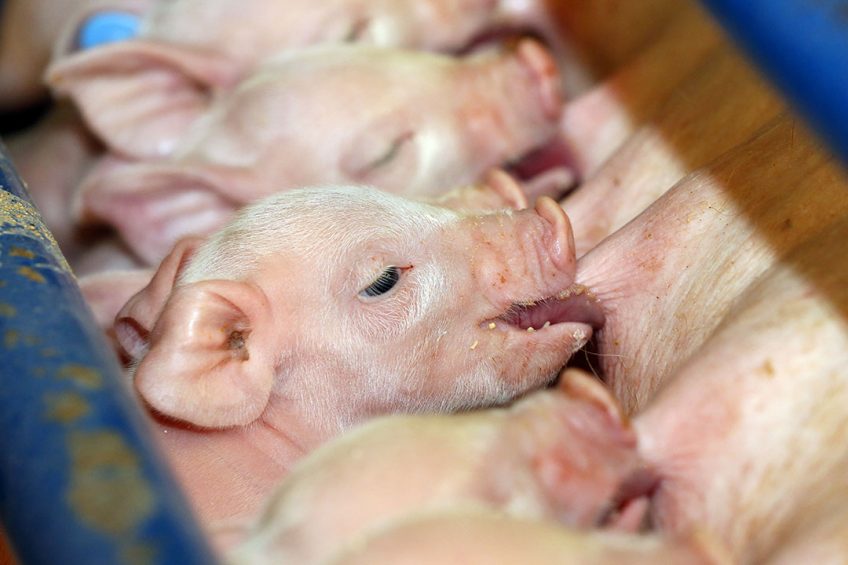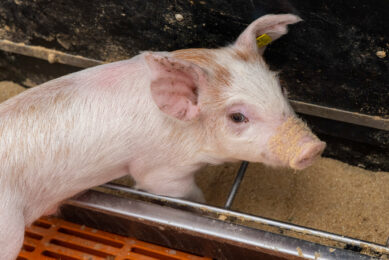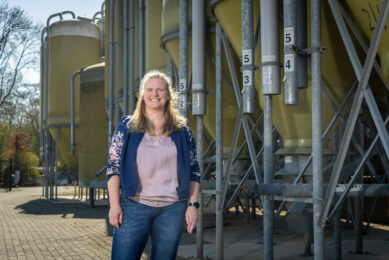Maternal and neonatal pig nutrition: some creative ideas

For all mothers and especially those in swine industry: today’s Expert Opinion was written for them. Around Mother’s Day, swine nutrition technology expert Dr Casey Bradley looks back on her time in the Neonatal Intensive Care Unit (NICU) and how those experiences made her think outside the box for piglet and sow nutrition around farrowing.
Yesterday, I celebrated my 4th Mother’s Day and cannot believe my son Arthur will be turning 5 in July. You may or may not know my motherhood story. During the end of my 2nd trimester I was diagnosed with preeclampsia and hospitalised. Arthur was born at 27.5 weeks of gestation and like his mother he has been quite resilient and now is thriving.
Opportunities around maternal and neonatal nutrition
I wanted to write this piece in honour of all the mothers in the world and especially the ones in the swine industry. We each have our own stories and our own challenges. I postponed motherhood for my career, but at the same time there is so much I have learned as a mother that makes me a better professional, with the biggest trait being empathy.
Opportunities we have not yet discovered
But as a nutritionist, my journey has also made me reconsider the opportunities we have not yet discovered in maternal and neonatal nutrition for pigs. For starters, we know that low birth weight pigs have a lower survivability and are not optimal performers. But I challenge us to question this reality: ‘Is that because predetermined factors or missed interventions via the sow or piglet?’
As more research is done from birth to slaughter, we are also realising that changes made to the sow or the piglet early in life can have lasting effects, either positive or negative, later in life.
Reflections from the Neonatal Intensive Care Unit (NICU)
- Arthur was classified with chronic lung disease and low birth weight. Pigs also tend to have underdeveloped lungs. When Arthur was born, he was put on a ventilator only to deliver a surfactant to his lungs, to help with oxygen saturation. He was housed in a special box and given supplemental oxygen for another 4 months. Makes me wonder if we developed boxes for low birth weight pigs and a way to deliver surfactants to our challenged pigs, would we greatly reduce our mortality associated with them?

- Caloric consumption was a main nutritional focus of the NICU staff for all neonates once they could consume and process milk. That is right, calories. There have been some supplements on the market that provide higher vitamins and energy supplements, but not much focus in peer-reviewed articles on this for at-risk pigs. But regardless of maternal milk or milk supplement, most babies received an extra 100 calories per feeding. With milk crates, boxes, etc could we create a more energy enriched supplement for at-risk pigs and a system designed for them and not a pig 3-5x their size?
- Gestational age versus birth date. Many mothers celebrate 1 month, 2 months, etc. But as a NICU mom you are trained to think differently and cannot track your milestones on the same scale as a full-term baby does. For the low birth weight pigs that survive are we putting them on a growth curve that is incorrect? Not every pig is average, thus we need to develop better systems to manage them to their curve, rather than the average.

Perceptions and ambitions changed
For those that have kept up with my columns, thank you. You can see that my perceptions and ambitions have changed based on my reflections as a NICU mother and I challenge you to the same. How can you create something better for our industry? To my fellow mothers, thank you and remember that I will continue to support you as a professional in the swine industry.

Pig Progress experts talk
To read more Pig Progress expert opinions











